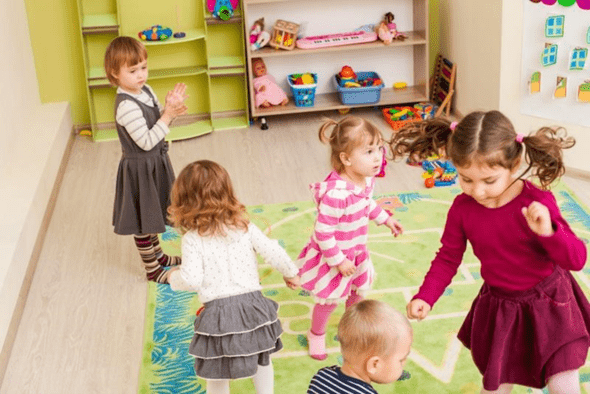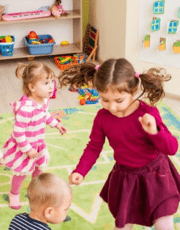Embracing Comfort and Learning: The Role of Classroom Rugs in a Montessori Environment
As a Montessori educator, one of the most rewarding aspects of my job is creating a nurturing environment where children can thrive. The Montessori philosophy emphasizes the importance of a prepared environment, meticulously designed to meet the developmental needs of each child.
Among the many elements that contribute to this environment, classroom rugs hold a special place. Over the years, I’ve seen firsthand how the thoughtful use of rugs can transform a classroom, making it more conducive to learning, comfort, and growth.
Creating Personal Spaces
One of the fundamental principles of Montessori education is fostering independence in children. Classroom rugs play a crucial role in this by defining personal workspaces. Each child can have their own small rug or mat to work on, providing a sense of ownership and responsibility. This personal space allows children to focus on their tasks without unnecessary distractions.
I recall a particular instance with a child named Grace. Grace was shy and often overwhelmed by the bustling activity in the classroom. Introducing a personal rug for her made a remarkable difference. It became her little haven, where she felt secure and could concentrate on her work. The defined space helped her gain confidence and gradually, she became more engaged and participative in class activities.
Promoting Order and Organization
Order is a cornerstone of the Montessori philosophy. A well-organized environment helps children understand the world around them and fosters a sense of security. Rugs help maintain order by clearly delineating different areas of the classroom. Whether it’s the reading corner, the practical life area, or the sensorial section, rugs can visually separate these spaces, making it easier for children to navigate and find the materials they need.
In my classroom, I use different colored rugs to signify various activity areas. For example, blue rugs are for reading, green for practical life activities, and red for group discussions. This color-coding system not only adds a visual appeal but also instills a sense of order and discipline in the children.
Comfort and Focus
A Montessori classroom is a dynamic space where children move freely, explore, and engage in various activities. Comfort is essential to sustain their interest and focus. Soft, plush classroom carpets provide a comfortable surface for children to sit, kneel, or lie on while working with Montessori materials. This comfort helps them concentrate better and stay engaged for longer periods.

Research has shown that a comfortable physical environment can significantly enhance learning outcomes. A study published in the Journal of Environmental Psychology found that classroom environments that cater to physical comfort contribute to better academic performance and emotional well-being in children. The soft texture of rugs, combined with their warmth, creates an inviting and cozy atmosphere, making children feel at home.
Enhancing Sensory Learning
Montessori education places a strong emphasis on sensory learning. Rugs offer rich tactile experiences that align perfectly with this approach. The different textures, patterns, and colors of rugs stimulate children’s senses and enhance their learning experiences.
For example, I use rugs with different textures in the sensorial area. Children love to feel the various textures and often incorporate these sensory explorations into their play. This not only enhances their tactile discrimination skills but also makes learning more engaging and enjoyable.
Facilitating Group Activities
While personal rugs are essential for individual work, larger rugs play a significant role in facilitating group activities. Montessori classrooms often include circle time, group discussions, and collaborative projects. Having a spacious, comfortable rug in the center of the classroom provides a defined area for these activities.
During our morning circle time, children gather on the large rug to share their thoughts, listen to stories, and discuss the day’s plans. This ritual fosters a sense of community and belonging among the children. The rug becomes a central meeting point, reinforcing social bonds and promoting cooperative learning.
Noise Reduction
Classroom noise can be a significant distraction, affecting children’s ability to concentrate. Rugs help absorb sound, creating a quieter and more peaceful learning environment. This acoustic benefit is particularly valuable in Montessori classrooms, where multiple activities often occur simultaneously.
I noticed a remarkable difference in noise levels after introducing more rugs into the classroom. The overall atmosphere became calmer, allowing children to focus better on their tasks. The reduced noise also made it easier for me to communicate with the children, enhancing the overall teaching and learning experience.
Practical Considerations
When choosing rugs for a Montessori classroom, several practical considerations come into play. Durability is crucial, as these rugs need to withstand daily use and occasional spills. Opting for high-quality, easy-to-clean materials ensures that the rugs remain fresh and hygienic.
Safety is another important factor. Rugs with non-slip backings prevent accidents, ensuring that children can move freely and safely. In my classroom, I always check that the rugs are securely placed and regularly inspect them for any wear and tear.
Educational Value
Some rugs come with educational themes, adding an extra layer of learning. For instance, I have a rug with a world map in the cultural area of the classroom. This rug not only defines the space but also serves as a learning tool. Children love to sit on the map, pointing out different countries and continents, sparking their curiosity about the world.
Conclusion: A Warm and Nurturing Environment
Incorporating rugs into a Montessori classroom goes beyond mere aesthetics. These versatile elements create a warm, comfortable, and organized environment that supports the holistic development of children. From defining personal spaces to facilitating group activities, promoting sensory learning, and reducing noise, rugs play a vital role in enhancing the Montessori learning experience.
As I reflect on my journey with Alex and other children in my classroom, I am reminded of the profound impact that a thoughtfully prepared environment can have. Rugs, in their simplicity and functionality, contribute significantly to this environment, making it a place where children feel safe, engaged, and eager to learn.
For parents and educators considering adding rugs to their Montessori settings, remember that these simple additions can make a world of difference. Embrace the warmth and comfort they bring, and watch as your children flourish in their learning journey.





